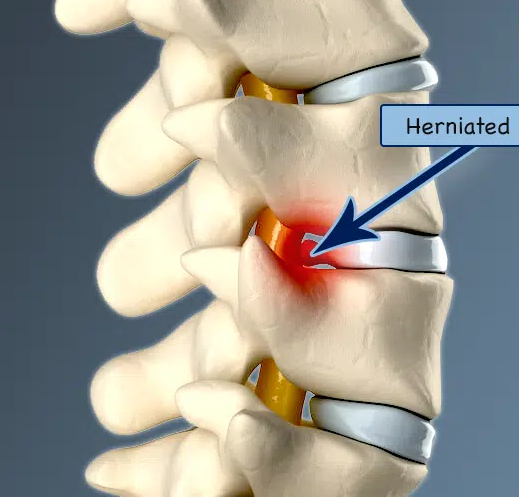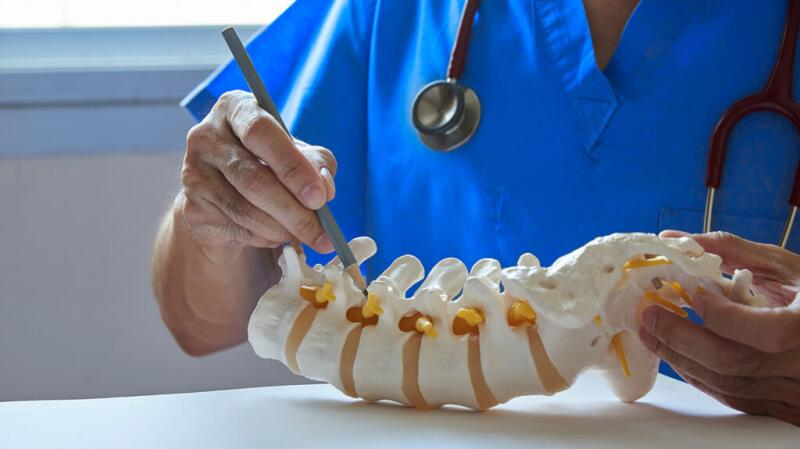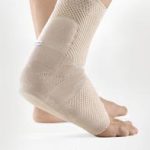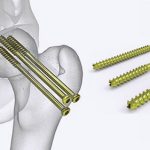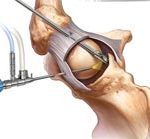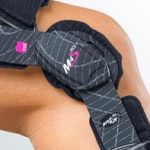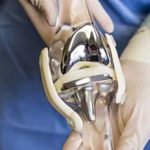HERNIATED DISC SURGERY
Lumbar discectomy is a type of surgery to fix a disc in the lower back. This surgery uses smaller cuts (incisions) than an open lumbar discectomy.
Your backbone, or spinal column, is made up of a chain of bones called the vertebrae. Your spinal cord runs through the spinal column. The bones help protect the cord from injury. Discs sit between each vertebra to provide cushioning and support. Large nerves called nerve roots lead from the spinal cord through small holes in the bones called foramen. These nerve roots send and receive signals to and from the body. The signals are sent to and from your brain through the spinal cord. Sometimes the outer wall of one of these discs may dry out and weaken with age or injury. When this happens, the soft, inner part of the disc bulges out. This is called a herniated or bulging disc. This bulging disc can press on the spinal cord and cause symptoms such as pain, tingling, or weakness in a nearby part of the body.
During a minimally invasive lumbar discectomy, an orthopedic surgeon takes out part of the damaged disc. This helps ease the pressure on the spinal cord. Your surgeon can use different methods to do this. With one method, your surgeon inserts a small tube through the skin on your back, between the vertebrae and into the space with the herniated disc. He or she then inserts tiny tools through the tube to remove a part of the disc. Or a laser may be used to remove part of the disc. Unlike an open lumbar discectomy, the surgeon makes only a very small skin incision and does not remove any bone or muscle.
How Herniated Disc Is Treated?
In most cases, the patient can be treated non-surgically. Depending on the condition and the herniation extent, the doctor may prescribe specific medicines or physiotherapy.When the disc herniation does not seem to be relieved after 6 weeks of non-surgical therapy, the surgery is recommended. However, the surgical method may differ from one person to another.The doctor may ask you to take diagnostic tests including X-ray and CT scan. Such tests provide clear images of the damaged disc and its surrounding tissue and nerve.
Types of Herniated Disc Surgeries:
A herniated disc can be treated through various types of surgeries. The most common ones are listed below:
Discectomy: Discectomy refers to the procedure of removing the herniated part of the disc from your spine. So, there will be no more pressure on the nerves in your spinal cord.If the damaged disc locates in the lower or lumbar spine, the surgery is called lumbar discectomy or lumbar spine surgery. In this procedure, the surgeon accesses the ruptured disc by making incision on the back of your spine. The bulging part is then cut and taken out.The surgery can also treat spinal stenosis. Spinal stenosis is a condition when the spine is compressed, causing you pain and immobility.
Microdiscectomy or open discectomy:
When the surgery is done using a special microscope to see the inside of your body, it is referred to as microdiscectomy. When the surgeon does not use such tool and makes a large cut to observe the slipped disc directly, the procedure is called open discectomy.
Depending on the patient’s condition and the surgeon’s proficiency, your surgeon may decide to perform either methods.
Percutaneous discectomy:
In this procedure, a tool enters the body and reduces the size of herniation through heating and scraping. The surgeon cuts the ruptured disc out or burns the disc using laser beam. This surgery is less common and less effective, compared to other approaches.
Laminotomy:
Laminotomy refers to the procedure of manipulating lamina to help relieve the nerve roots which have been pressed due to disc herniation. In this procedure, a certain area of the lamina is removed. Lamina is the back part of the vertebra (backbone).
In some cases, the surgeon may remove the whole lamina of the disc and its attached tissue. This procedure is called laminectomy, and cannot be done on all patients.
Disc replacement:
When a single disc is largely degenerated and diseased, it can be removed and replaced with an artificial disc. The artificial disc or implant is a metal or plastic-like device which acts as a normal disc. Artificial disc replacement is done under general anesthesia and the incision is made on the abdomen. Then, the surgeon removes the disc and the disc implant is inserted into the place.Sometimes, only a part of the disc, i.e. the gel-like center of the disc or nucleus, needs to be replaced. In this condition, the outer part is not removed and the procedure is called disc nucleus replacement.
Spinal fusion:
A more invasive procedure, spinal fusion fuses two bones in the spine, eliminating the diseased disc and filling in the space between the two vertebras. This procedure not only treats a degenerated disc, but also is recommended to patients suffering from spinal stenosis, damaged or fractured vertebra, kyphosis, scoliosis, etc.
In this procedure, the surgeon uses a bone graft taken from the patient or a donor and puts it in the empty space of a disc. If the disc needs to be removed before spinal fusion, a discectomy will be done.
The surgery diminishes severe pain and improves the patient’s quality of life. Yet, as it merges the two bones, it results in the limited movements of the treated area.
Cost in Iran
The cost of herniated disc surgery in Iran depends on the patient’s condition and the surgical
method they should undergo.
In general, a slipped disc surgery costs around $1,400 to $2,200 in Iran.
However, for an exact price quote and a free consultation, we ask you to contact us now. Our medical consultants will provide you with all the details you need, including the price and the procedure itself.


